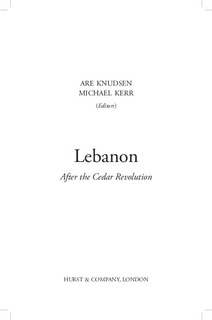| dc.description.abstract | A comprehensive look at contemporary Lebanon and the ongoing attempts by Israel, Syria and Iran to influence its domestic affairs.
Lebanon is the prisoner of its geography and its history, a prize for invaders since ancient times, a small multi-denominational state still recovering from a bloody civil war in its search for political autonomy and stability. This book examines the country’s recent past since 2005, when a mass movement agitated against Syrian dominance in the wake of the assassination of former prime minister Rafik Hariri. Also detailed are the role of Hezbollah and other political groups.
The authors examine the changes that these events brought to Lebanon, be they lasting or ephemeral, and the challenges they represent for a state which, despite the resilience of its power-sharing system of government, remains hotly contested and unconsolidated. Sectarian tensions have escalated, predominantly between the Sunni and Shia communities, causing outbursts of street-based violence and paralysis in government. This two-bloc system has left Lebanon ungovernable, not simply due to deep-seated political differences, but because of the external linkages which ties the two blocs to their foreign patrons, namely the USA and Iran. As the Arab Spring develops, it also increases Hezbollah’s significance to Iran as the embattled Assad regime struggles to quash the Syrian insurgency.
UK-Edition by Hurst Publishers (2012)
US-Edition by Oxford University Press (2014)
Reviews
“ No book published to date so effectively unpacks the dynamics that define post-2005 Lebanon as does ' Lebanon After the Cedar Revolution'."
Adjunct Fellow Joy Aoun (CSIS) , Noref, Nov., 2013 .
Summary (in Norwegian)
Drapet på tidligere statsminister Rafik Hariri i februar 2005 utløste et folkelig opprør som fikk tilnavnet «Cedertre Revolusjon» og kan sees på som en forløper til de | |
